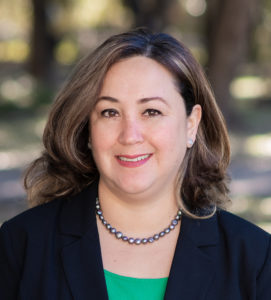By Michelle Martínez Vega • IDRA Newsletter • October 2022 •

$15,000 stolen from a teacher, or some may say just given away?
In April of this year, Angie Olson, a 40-year veteran educator fell victim to a pop-up computer scam that resulted in her losing over $15,000 of her hard-earned money (Hurley, 2022). She thought she was doing the right thing.
In a digital landscape where even teachers are finding it challenging to discern fact from fiction, how do we ensure students have the skills to keep themselves safe? Do we assume that because they are digital natives (people raised in the presence of digital technology) that they will be able to easily sift through the constant bombardment of digital media being thrown at them?
In matters of education and safety, it is best not to take chances.
Considering the average person receives over 100 e-mails daily, it is alarming that typically one out of every 99 emails is an attempted scam (Radicati Group, 2018). The average person in this country consumes over 7.5 hours of media per day (SRD, 2021). And as new terms like “fake news” and “alternative facts” are being baked into the public lexicon, the necessity to enable our students to be digitally literate has become paramount.
At the rate that we are consuming and digesting media, teaching digital literacy and how to be media savvy is now tantamount to teaching nutrition and exercise.
Students, in particular, need strategies to help them distinguish between credible news stories and opinion pieces. They need the skills to determine which email in their inbox is a potential scam and which is a legitimate request for information.
Strategies and Skills for Teaching Students to Help them Become Good Digital Citizens
First, we need to recognize that students – even digital natives – need to learn the soft and hard skills of good digital citizenship. They are being raised in the ever-evolving tech landscape drenched in media, and it is our responsibility to provide tools and teach strategies to succeed in that environment.
Next, digital citizenship must be embedded in everyday learning. When a research project is assigned, students need to understand that completing their assignment also means employing good research methodologies and acquiring knowledge from credible sources.
We need to teach students about such things as “creative commons” and “copyright licenses.” When students are unaware of how to navigate these concepts, they do not know how to avoid pitfalls or, better yet, how to leverage them to their advantage.
In 2019 one such major pitfall befell Houston ISD when it was hit with a $9 million verdict over its reproduction of copyright-protected education materials (Cox, 2019). After some negotiation, the district had to pay $7.8 million (Bailey, 2019).
One strategy is to partner with your campus librarian(s). They can teach students how to be media savvy in both searching online, cross-referencing with print media, and verifying cited sources.
Resources for Teaching Digital Citizenship
Here are some free resources that you can use in your classroom.
- Learning for Justice, Digital Literacy
- Media Smarts Digital Literacy
- ISTE Digital Literacy
- Media Wise Digital Literacy for All
- Common Sense Media – Curriculum
- Common Sense Media – Digital Citizenship
- Digital Skills Library
Today, students and teachers alike live in a technology-driven world. It is critical that we help students learn to engage online in ways that are safe and responsible and with an understanding of the complexities of the Internet and social media.
Never before have we had so much amazing knowledge glowing in the palm of our hands, we must practice digital citizenship daily and help students become productive media-savvy digital citizens so that they may take full advantage of all the world has to offer.
Resources
Bailey, J. (October 29, 2019). How a School District Wasted $7.8 Million. Plagiarism Today.
Cox, K.L. (June 6, 2019). Houston School District Ordered to Pay $9.2 Million In Copyright Infringement Case. Above the Law.
Hurley, B. (April 13, 2022). 76-year-old Fargo woman loses $15,000 in computer scam. Valley News Live.
Radicati Group. (March 2018). Email Statistics Report, 2018-2022 – Executive Summary. The Radicati Group, Inc.
Statista Research Department. (November 2, 2021). Media use in the U.S. – Statistics & Facts. Statistica.
Vuleta, B. (October 28, 2021). How Much Data Is Created Every Day? +27 Staggering Stats. Seed Scientific.
Michelle Martínez Vega is IDRA’s chief technology strategist. Comments and questions may be directed to her via email at michelle.vega@idra.org.
[©2022, IDRA. This article originally appeared in the October 2022 issue of the IDRA Newsletter by the Intercultural Development Research Association. Permission to reproduce this article is granted provided the article is reprinted in its entirety and proper credit is given to IDRA and the author.]


